Puerto rican beliefs and values: Cultural Values | Puerto Rico
Puerto Rico – Language, Culture & Etiquette
Hola! Welcome to our Guide to Puerto Rican Society, People, Etiquette and Business Culture
What will you Learn?
You will gain an understanding of a number of key areas including:
- Language
- Religion and beliefs
- Culture and society
- Social etiquette and customs
- Business culture and etiquette
Fresh fruit for sale on the streets on San Juan. Photo by Ruoyu Li on Unsplash
Stereotyping
Remember this is only a very basic level introduction to Puerto Rico, the culture and the people; it cannot account for the diversity within Puerto Rican society and is not meant in any way to stereotype all people you may meet in the country!
Facts and Statistics
- Location: Caribbean, island between the Caribbean Sea and the North Atlantic Ocean, east of the Dominican Republic.

- Capital: San Juan.
- Flag: Three red stripes symbolising the blood lost by the martyrs who died for the country. Two white stripes symbolise peace and victory, the white symbolises Puerto Rico and the blue represents the sky and waters.
- National anthem: “La Borinqueña” was adopted in 1952 by Puerto Rico as the national anthem.
- Nationality: Puerto Rican (Boricua is also used)
- Ethnic Make-up: 99% of Puerto Rico inhabitants are Latino, split by; white 75.8%, black/African American 12.4%, other 8.5% (includes American Indian, Alaskan Native, Native Hawaiian, other Pacific Islander, and others), mixed 3.3% (2010 est.)
- Population: 3,294,626 (July 2018 est.)
- Government: Common wealth of Puerto Rico
Basic Overview of Puerto Rico
Puerto Rico has a rich and vibrant tourism industry, due to its extensive coast line, beautiful sandy beaches and opportunities for scuba divers and surfers. It also an outstanding tropical landscape and rainforests.
It also an outstanding tropical landscape and rainforests.
- Accommodating the inbound tourists is the large port in the capital city San Juan which is sufficiently big to cater for the large international cruise ships travelling to the country.
- Manufacturing is a dominant part of the economy; with industries such as pharmaceuticals and textiles.
Language in Puerto Rico
The official languages of Puerto Rico are Spanish and English, spoken by 90% and 10% of the population respectively.
- Spanish is the written and spoken language of law, government, business, education and day to day living.
- Prior to the Spanish conquering Puerto Rico, the linguistic makeup of spoken languages evolved from Taino, the languages spoken by the indigenous inhabitants of Caribbean descent.
Hanging out on the beach in Fajardo. Photo by Sergio Otoya on Unsplash
Puerto Rico – Society and Culture
Religion & Beliefs
- As with most countries conquered by the Spanish, Roman Catholicism is the dominant religion.
 However, the people of Puerto Rico tend not to follow the religion dogmatically. Religious practices tend to blend Taino and African traditions.
However, the people of Puerto Rico tend not to follow the religion dogmatically. Religious practices tend to blend Taino and African traditions. - Although Protestantism also took a hold following the occupation of the USA in 1898, Roman Catholicism remains the dominant faith.
- As with many other faiths, many islanders believe in the presence and power of mal de ojo (the evil eye). It is believed that if people or belongings are looked at with envy that this can lead to evil outcomes, such as a car crash (if people look at the car with envy) or sickness and perhaps death to a child if someone looks them with envy. Many people carry a charm bracelet which is believed to offer protection against the mal de ojo.
- There is considerable religious freedom in Puerto Rico and people are constitutionally free to choose.
Major Celebrations/Secular Celebrations
- 1st January – New Year’s Day, (Día de Año Nuevo).
- 6th January – Three Kings Day, (Día de Reyes).
 Official holiday which celebrates the visit of the wise men to baby Jesus.
Official holiday which celebrates the visit of the wise men to baby Jesus. - 13th January – Birthday of Eugenio María de Hostos, (Natalicio de Eugenio María de Hostos). Official holiday, which celebrates the birthday of an important figure in the fight for freedom.
- 22nd March – Emancipation Day, (Día de la Abolición de Esclavitud) Official holiday which celebrates the abolition of slavery.
- Friday before Easter – Good Friday.
- Last Monday of May – Memorial Day, (Recordación de los Muertos de la Guerra).
- 14th October – Columbus Day, (Día de la Raza Descubrimiento de América). Official holiday which commemorates the landing of Christopher Columbus.
- 25th July – Commonwealth Constitution Day which commemorates the landing of troops from the USA
- 26th November – Thanks Giving day, (Día de Acción de Gracias).
- 25th December – Christmas Day. (Día de Navidad).It’s worth noting that the Christmas celebration season in Puerto Rico lasts from Thanks Giving until mid January.

Puerto Rican Family Values
- The family forms the basis of stability and is considered the most enduring social network
- The individual derives support and assistance in times of need from the extended family, which generally encompasses three generations.
- When possible, the extended family lives together or within the same vicinity.
- Loyalty to the family comes before any other social relationship, even business.
- Nepotism is considered a good thing, since it implies employing people one knows and trusts, which is of primary importance.
- The oldest male in the extended family makes decisions affecting the balance of the family.
Puerto Rican Hospitality
- Individuals generally pride themselves on their hospitality.
- When someone visits, hosts and hostesses make every effort to ensure their guests feel welcome and comfortable.
- House guests are treated with considerable attention an Puerto Ricans attempt to cater to their every desire.

Appearances Matter
- Appearances are generally very important and people tend to be very fashion conscious.
- When you are in Puerto Rico, take the time to dress well and to consider your appearance as locals tend to perceive appearance as indicative of social standing and success.
- Clothing is usually of a high standard and made from good quality fabrics.
- Designer labels, particularly those from the USA, are looked upon favourably.
Class in Puerto Rico
- Following economical progress in the 1940s and 1950s, social classes which had previously existed began to blur.
- By the beginning of the 21st century, universal access to education resulted in a marked increase in opportunities and social mobility, which further
- blurred class lines.
- Although the class system is still evident, it has become far less obvious.
Fiesta Time! Photo by Jorge Rodriguez (CC BY-NC-ND 2. 0)
0)
Etiquette & Manners in Puerto Rico
Meeting Etiquette
- A handshake, with direct eye contact and a welcoming smile is standard.
- Maintaining eye contact is crucial as it indicates interest.
- When shaking hands, use the appropriate greeting for the time of day – “buenos dias”, “buenas noches”, or “buenas tardes”.
Gift Giving Etiquette
- If invited to dinner at a Puerto Rican’shome bring a gift such as wine, flowers, chocolates or pastries.
- Avoid giving business gifts of value. Instead, bring something that represents your home country or town.
- Where given by an individual, gifts are generally opened when received.
- However, when gifts are given by a group of people, then the recipient generally opens them in private. This is done in an effort to ensure that comparisons aren’t made between the gifts given.
Dining Etiquette
If you are invited to a Puerto Rican’s home:
- Dress well, as locals generally take pride in their appearance and judge others on their clothing.
 If you arrive looking untidy or unkempt, then this will be perceived negatively.
If you arrive looking untidy or unkempt, then this will be perceived negatively. - Do not overly praise an item in your host’s home due to the evil eye, as mentioned above.
- Although punctuality is considered a good thing, guests are not expected to arrive on time for social occasions. Arriving between 15 and 30 minutes later than the stipulated time is considered on time.
- Often several generations live in the same house. Show deference to the family elders.
Watch your table manners!
- Wait for the host or hostess to tell you where to sit. There may be a seating plan.
- Table manners are Continental — the fork in the left hand and the knife in the right while eating.
- Meals are generally served family style or buffet style.
- Guests are served first.
- The host says “buen provecho” (“enjoy” or “have a good meal”) as an invitation to start eating.
- Always keep your hands visible when eating, but do not rest your elbows on the table.

- You may leave a small amount of food on your plate when you have finished eating.
- When you have finished eating, place your knife and fork across your plate with the prongs facing down and the handles facing to the right.
Tipping
- The influence of the USA in Puerto Rico means that tipping generally mirrors USA culture
- Bar tenders should be tipped in the region of $1 per drink
- Taxi drivers should received 10 – 15% of the fare
- In terms of restaurants, consider 15% of the bill unless service charge has been applied.
A plate of fresh Rican cuisine including pinchos (kebabs), shrimp and pork, chicken wings and tostones. Photo by J. Barry (CC BY 2.0)
Business Culture and Etiquette in Puerto Rico
What to wear
- Style is important but not necessarily formality.
- You may find a very relaxed dress code in some industries.

- In general, men will sport conservative, dark clothing – some will wear a guayabera shirt with nice trousers.
- Women generally wear business suits or dresses.
Relationships & Communication
- Networking is important part of business since it broadens your base of contacts, and therefore, people who can smooth the way for you.
- This is a country where knowing the right person is often more important than what you know.
- Doing favours and collecting favours owed is a highly developed art form.
- Name-dropping is commonplace and nepotism does not have the negative connotation it has in many other countries.
- Trust is crucial to developing relationships.
- It is important that you treat business colleagues with respect and not do anything to cause them loss of face.
- Senior positions in business are predominately held by the upper class; therefore, it is important that you pay attention to the hierarchy and show appropriate deference and respect to those in positions of authority.

When doing business in Puerto Rico, dress well and find the right balance between personal and professional. Photo by JAXPORT (CC BY-NC 2.0)
Business Meeting Etiquette
- Business appointments are required and can often be scheduled on short notice; however, it is best to make them 2 to 3 weeks in advance by telephone, email or fax.
- Arrive on time for meetings. Although locals may strive for punctuality, they do not always achieve their goal. However, you personally should make the effort.
- The first meeting is often quite formal.
- Small talk helps establish a rapport. Do not immediately begin discussing business.
- Have all written material available in both English and Spanish. Don’t assume that all your counterparts will speak English.
- It may be necessary to bring an interpreter – check in advance.
- Meetings are often interrupted and several people may speak at the same time.

Be careful with facial expression and bodily movements – gestures are context sensitive and do not always translate well between countries.
Business Negotiation Etiquette
- Expect small talk before getting down to business since Puerto Ricans generally prefer to get to know people before doing business.
- It will take several meetings to come to an agreement. Negotiation and time for consultation are important.
- Relationships are viewed as more important than business documents.
- Negotiations and decisions take a long time.
- Hierarchy is important, although not always apparent. Defer to the person with the most authority, as they are most likely the decision maker.
- There are often long bureaucratic delays in reaching decisions. Be patient. If you try to rush the process, you will be thought both rude and aggressive.
- Avoid high-pressure sales tactics.
.
Business Cards
- Business cards are exchanged during introductions without formal ritual.

- Have one side of your business card translated into Spanish.
- Present your business card with the Spanish side facing the recipient.
Machismo
- Although Puerto Ricans value equality, machismo is still prevalent at a cultural level.
- Puerto Rican men are very used to seeing women in positions of power and authority, but this does not always equate with how they may behave around them or treat them.
Being a Manager in Puerto Rico
- Intercultural management is more likely to succeed if you understand that although outwardly warm and hospitable; Puerto Ricans are also conservative and traditional.
- They generally behave formally and expect proper etiquette at all times. It is important to mind your manners and not appear overly friendly before you have developed a personal relationship.
- Visit our Management Guide to Puerto Rico for more in-depth information about this topic.

Want to learn about different cultures? Then explore our free online resources.
Do you need to cite this page for school or university research?
Please see below examples.
Simply change the country name depending on which guide you are referencing.
MLA Format:
Commisceo Global Consulting Ltd. Afghanistan – Language, Culture, Customs and Etiquette. www.commisceo-global.com. 1 Jan. 2020 https://commisceo-global.com/resources/country-guides/afghanistan-guide
APA Format:
Commisceo Global Consulting Ltd. (2020, January 1) Afghanistan – Language, Culture, Customs and Etiquette. Retrieved from https://commisceo-global.com/resources/country-guides/afghanistan-guide
Harvard Format:
Commisceo Global Consulting Ltd. (2020). Afghanistan – Language, Culture, Customs and Etiquette. [online] Available at: https://commisceo-global.com/resources/country-guides/afghanistan-guide [Accessed ENTER DATE].
Puerto Rican Culture: National Identity, Gender Roles, and Religion
National Identity
Today more Puerto Ricans live on the U.S. mainland than in Puerto Rico. The island’s population was already shrinking due to a double-digit unemployment rate prior to Hurricanes Irma and Maria in 2017. After the storms, the population dropped to a 40-year low of 2.9 million, down from 3.6 million in 2014.
In 2005 Puerto Ricans were proclaimed the happiest people on earth, according to a highly reported study by the Stockholm-based organization World Values Survey. There does seem to be a collective, fun-loving spirit and zest for life at the heart of Puerto Rican culture, despite the challenges residents endure. Puerto Ricans tend to celebrate big and often. There are more than 500 festivals a year on the island, and everything is a family affair involving multiple generations of relatives. Music and food are at the center of most gatherings.
But don’t mistake the joie de vivre for frivolity.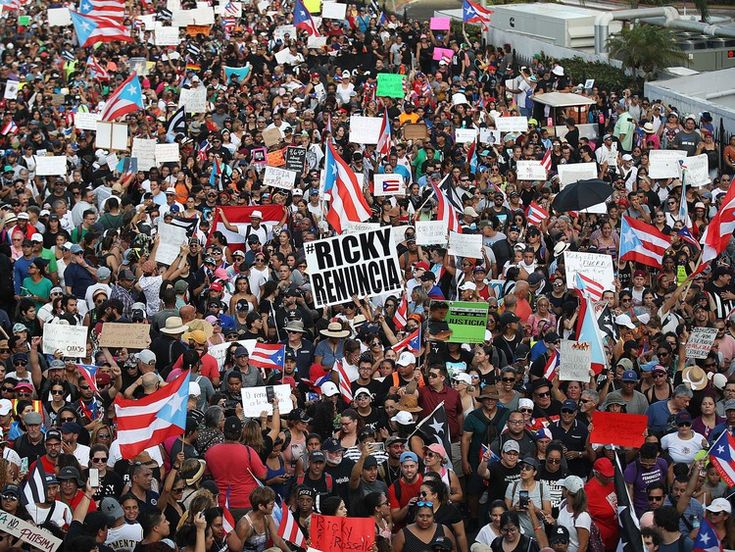 There are many great thinkers and artists from Puerto Rico. Many locals tend to be very passionate about their opinions and happy to debate politics or sports for hours. They are also exceedingly proud of their island and their heritage. The Puerto Rican flag is ubiquitous on the island.
There are many great thinkers and artists from Puerto Rico. Many locals tend to be very passionate about their opinions and happy to debate politics or sports for hours. They are also exceedingly proud of their island and their heritage. The Puerto Rican flag is ubiquitous on the island.
Photo © Jiawangkun/Dreamstime.
The island’s culture has been significantly shaped by its history. It was originally inhabited by a society of peaceful, agriculturally based indigenous people who migrated to the island from South America. But beginning in 1508, the island became a Spanish colony, and for the next four centuries, European influence reigned. Towns were developed around central plazas and churches, according to Spanish custom. The church spread Catholicism, and Spanish became the official language.
Because the majority of colonists were men, the Spanish Crown officially supported marriage between Spanish men and Taíno women, leading to a population of mixed-race offspring. The Spanish also brought enslaved laborers to the island from Africa to work the island’s many coffee and sugar plantations. They also produced offspring with the Taíno and Spanish colonists, resulting in a further blending of races.
They also produced offspring with the Taíno and Spanish colonists, resulting in a further blending of races.
Because of this historic mixing of races, Puerto Ricans often claim there is no racial disparity on the island, but recently there have been reports of racial profiling of those of African descent among law enforcement. When the United States took control of Puerto Rico in 1898, the island underwent another enormous cultural transformation. Suddenly U.S. customs and practices were imposed. English became a common second language, and has at times been proclaimed the official language. The U.S. dollar became the legal tender. American corporations set up shop, bringing with them an influx of mainland Americans, whose ways of dress, cuisine, and art were integrated into the existing culture. Much of this influence is from those in the military. Some people credit that influence on the relative stability and orderliness of public life on the island. Visitors will not be accosted by hordes of people hawking souvenirs in Puerto Rico, like in some islands. The island’s governmental and judicial systems are organized similarly to the United States, and many U.S. social services are offered on the island.
The island’s governmental and judicial systems are organized similarly to the United States, and many U.S. social services are offered on the island.
Inroads of contemporary American culture have been made into much of island life, but Puerto Ricans are fiercely proud of their Spanish heritage. Since becoming a U.S. territory a little more than 100 years ago, Puerto Rico has undergone a seismic shift in its national identity that has divided the island politically. Puerto Ricans are U.S. citizens, and they enjoy many—but not all—the privileges that entails. The issue of Puerto Rico’s future political status has been an ongoing debate for more than 50 years, and it is as much a part of the island’s national identity as its Spanish language and customs.
Gender Roles in Puerto Rico
When it comes to gender roles, Puerto Ricans are fairly traditional. However, as in the rest of the industrial world, women have made inroads into leadership positions in the formerly male worlds of business, politics and sports.
Those who identify as LGBTQ enjoy the same rights and privileges as heterosexual individuals. Transgender persons are permitted to change the gender on their birth certificates, and third gender is legally recognized.
Religion in Puerto Rico
Before the arrival of Christopher Columbus in 1493, Puerto Rico’s indigenous population was composed of highly spiritual individuals who worshipped multiple gods believed to reside in nature. It was a common belief that these gods controlled everything from the success or failure of crops to one’s choice of a spouse.
All that began to change when Ponce de León arrived in 1508, bringing with him several Roman Catholic priests who ministered to the new colony and set about converting the Taíno Indians to the faith, beginning with baptisms. In 1511, Pope Julius II created a diocese in Caparra, the island’s first settlement.
Today, depending on the source, Puerto Rico’s population is between 75 and 85 percent Roman Catholic. Although weekly church attendance is far below that figure, the Catholic Church has great influence on Puerto Rican life. Each town has a Catholic church at its center and celebrates its patron saint with an annual festival. Although many patron-saint festivals have become much more secular over time, they typically include a religious procession and special Mass to mark the day. Images of saints are common items in traditional households, and you can’t enter a church without seeing clusters of women lighting candles, praying, or kissing the hem of the dress worn by a statue of Mary.
Although weekly church attendance is far below that figure, the Catholic Church has great influence on Puerto Rican life. Each town has a Catholic church at its center and celebrates its patron saint with an annual festival. Although many patron-saint festivals have become much more secular over time, they typically include a religious procession and special Mass to mark the day. Images of saints are common items in traditional households, and you can’t enter a church without seeing clusters of women lighting candles, praying, or kissing the hem of the dress worn by a statue of Mary.
Some Puerto Ricans practice a hybrid form of religion called espiritismo, which combines elements of the Catholic religion and Indian beliefs in nature-dwelling spirits that can be called on to effect change in one’s life. Similarly, some Puerto Ricans of African descent practice Santería, introduced to the island by Yoruba slaves from West Africa. It also observes multiple gods and combines elements of Catholicism. Practitioners of both religions patronize the island’s botanicas, stores that sell roots, herbs, candles, soaps, and amulets that are employed to sway the spirits to help individuals achieve success, whether it be in business, love, or starting a family.
Practitioners of both religions patronize the island’s botanicas, stores that sell roots, herbs, candles, soaps, and amulets that are employed to sway the spirits to help individuals achieve success, whether it be in business, love, or starting a family.
Once the United States arrived in Puerto Rico in 1898, Protestantism began to grow on the island, and all major sects are represented. Pentecostal fundamentalism has developed in recent decades, and there is a small Jewish community on the island as well.
Related Travel Guide
Relax beneath palm trees, kayak through bioluminescent bays, or dance the night away to the sounds of salsa: Experience the Island of Enchantment with Moon Puerto Rico.
Also Available From:
Buy Now:
The Dominican Republic is rediscovering its beauty through The Way to Happiness
NEWS
‣
RETURN OF HONOR AND SELF-RESPECT
THE DOMINICAN REPUBLIC FINDS ITS BEAUTY AGAIN THANKS TO THE WAY TO HAPPINESS
The Way to Happiness Foundation of the Dominican Republic conducts workshops throughout the country for all levels of society.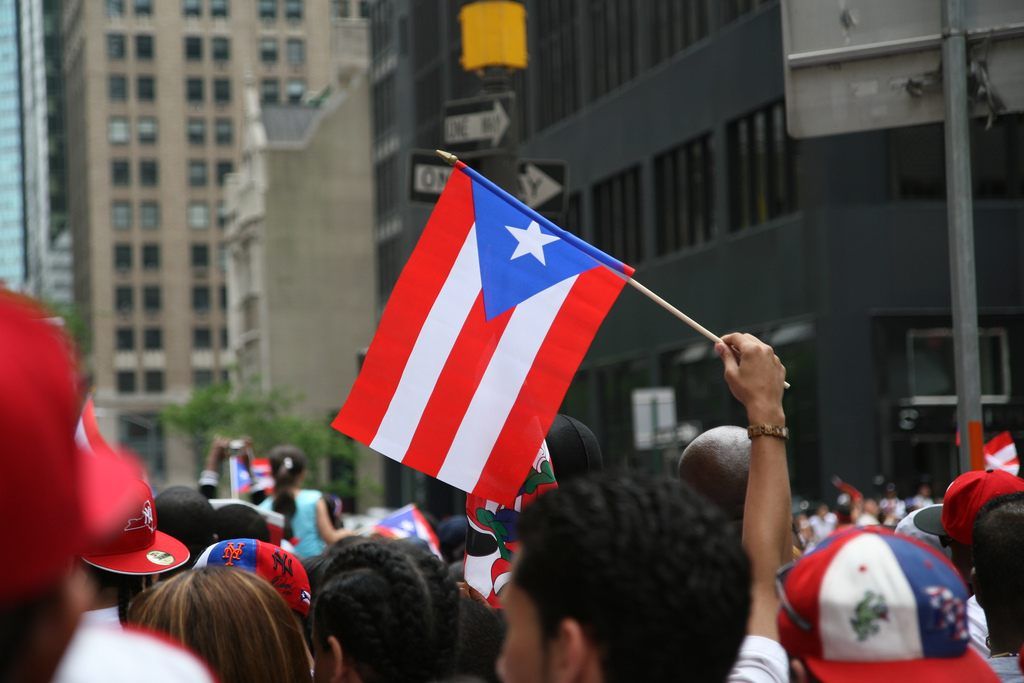
The Way to Happiness team in the Dominican Republic promotes 21 teachings to the community and reduces crime in the beautiful Caribbean country. nine0003
“When you want a happy community, you can’t ignore the lack of a moral code,” says Diana Pedroni, Executive Director of The Way to Happiness Dominican Republic. This country, a popular tourist resort with picturesque beaches, vibrant culture, music and friendly people, is also plagued by crime, claiming more than 2,000 lives a year. “I saw a common denominator,” Pedroni said. “Broken families that create criminals and a society that goes downhill instead of up.” Looking for solutions, she found The Way to Happiness and soon teamed up with Bienvenido Flores, director of the National Prevention and Citizen Safety Program.
“The Dominican Republic has been diligently trying through various government programs to significantly reduce the number of murders. In The Way to Happiness, I found instructions that guide the path of an individual with strong moral character,” said Flores.
Pedroni and Flores have become an unstoppable team. After meeting with the police chief of the northeast region, they provided a seminar for the police, who then distributed the brochures in one of the districts of the city of Moki. At first, residents were nervous to see the police, but as the pamphlets were distributed, so was interest. So Pedroni and Flores held a workshop for this community. Although things began to improve in Moka, the situation in the rest of the island was getting worse. Pedroni led a seminar for inmates at the La Isleta Correctional Center. Then, to cover the entire island, a team of trained “distributors” traveled to one city after another, holding seminars in all social strata – from businesses to rehabilitation centers and universities, reaching 250,000 people. They then worked with the Espaillat provincial government to bring the program to the entire region. After that, they trained the cadets of the military academy. With such a large outreach and provision across the country, the official The Way to Happiness Foundation was launched here. Soon, people all over the country joined the foundation, and brochure distribution was taking place everywhere from the old town of Santo Domingo to Boca Chica Beach, at the Merkengue festival and many other places, thus introducing The Way to Happiness to 2.2 million people. “. nine0011 What followed was a 21% reduction in crime and violence, after which the governor of the province of Espaillat said: “This is the essence of The Way to Happiness – to restore what society has lost.”
Soon, people all over the country joined the foundation, and brochure distribution was taking place everywhere from the old town of Santo Domingo to Boca Chica Beach, at the Merkengue festival and many other places, thus introducing The Way to Happiness to 2.2 million people. “. nine0011 What followed was a 21% reduction in crime and violence, after which the governor of the province of Espaillat said: “This is the essence of The Way to Happiness – to restore what society has lost.”
See full story at scientology.tv/DPedroni.
TAKE ACTION
Create your own custom cover
Individuals, companies, and nonprofits create custom covers, so you can do the same. nine0003
As the first moral code based solely on common sense, The Way to Happiness provides you with an effective and simple tool to improve the society around you.
The message and instructions from the book should be given to people. The text under the heading “Why I gave you this book” says: “Your survival is important to me.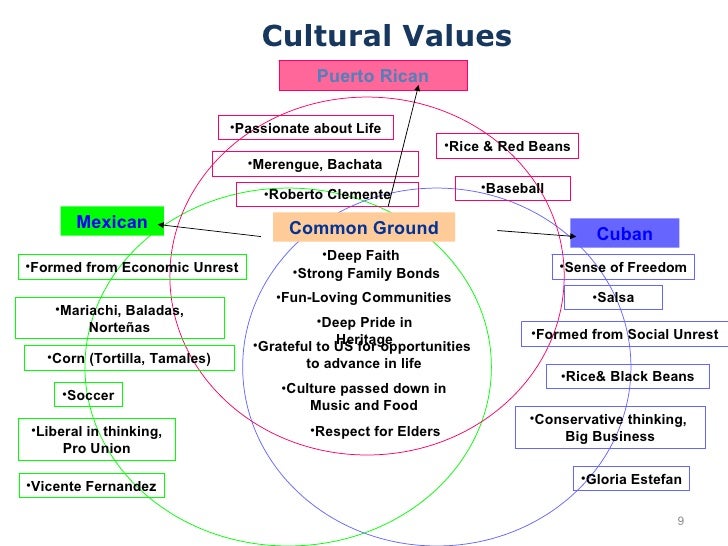 ”
”
This message touched the hearts of many people, as well as companies, non-profit organizations, law enforcement and government agencies who set out on their own The Way to Happiness . They do this by creating custom book covers that convey the message of their own unique role in creating a better world, a goal that the 21 precepts will help achieve.
Then they give pamphlets to their colleagues, co-workers, employees and those with whom they come into contact in their work to strengthen moral values in all walks of life.
You can do the same by submitting your ideas for a special cover by contacting The Way to Happiness International Foundation. nine0003
RESTORE TRUST AND HONESTY
The Way to Happiness International Foundation works to reverse the moral corruption of society and restore trust and integrity in the world through the publication and wide dissemination of 21 precepts. Your donations help support the printing and distribution of The Way to Happiness brochures and outreach materials.
DONATE TODAY »
nine0002 Subscribe
CLOSE
CLOSE
Read The Art of Positive Thinking online in full📖 – Swami Jyotirmayananda – MyBook.
© Translation. Afanasiev V.P., 2014
© Design. LLC “Svet”, 2015
* * *
Dedicated to the spiritual seeker of our days, striving to comprehend the secrets and reveal the amazing powers of his mind, as well as to acquire the spiritual values of life and contribute to the establishment of Peace and harmony on earth .
Swami Jyotirmayananda was born on February 3, 1931 in the northern province of the present Indian state of Bihar, consecrated by the great Buddha. From early childhood, signs of holiness were discerned in him. He had a calm, thoughtful disposition and a compassionate heart. He was an inescapable source of inspiration for everyone who had the good fortune to communicate with him. Along with school and housework, he often indulged in reflection on the meaning of life.
Along with school and housework, he often indulged in reflection on the meaning of life.
February 3 1953 years old at the age of 22, with a deep need to serve humanity in body and spirit, he becomes a sannyasin of an ancient monastic order, having accepted initiation from his guru, the renowned yogi and sage Swami Sivananda Saraswati from Rishikesh. Having retired from business and secluded himself in the hidden places of the Himalayas on the banks of the sacred Ganges, he indulges in intense austerity.
Years pass, and a young, promising sannyasin, already as a professor of religion, is teaching at the Forest Academy of Yoga and Vedanta. With his brilliant lectures and lessons on Indian culture, the Upanishads, Raja Yoga and all the major sacred scriptures of India, he gained fame as an expert in the mystical traditions of India. Along with teaching, he edits a magazine Yoga Vedanta Journal . Among the members of the “Society of Divine Life”, a spiritual organization established by his mentor, he was the sole and indisputable authority in the interpretation of the unique Vedantic scripture “Yoga Vasistha”. Endowed with the gift of intuitive insight into the truth and always ready to help foreign students understand yoga and the philosophy of Vedanta, Jyotirmayananda easily won universal love and recognition.
Endowed with the gift of intuitive insight into the truth and always ready to help foreign students understand yoga and the philosophy of Vedanta, Jyotirmayananda easily won universal love and recognition.
Thanks to his impeccable monastic life, love for people, outstanding spiritual knowledge and dynamic manner of expounding yoga and Vedanta, he becomes known throughout India. As a speaker, he is often invited to various conferences and symposiums on spiritual issues, in particular, to the All India Vedantic Conferences held in Delhi, Amritsar, Ludhyana and other cities of India. nine0003
In 1962, in response to numerous requests from Western yogis, Swami Jyotirmyananda left India. From 1962 to 1969 he lives in Puerto Rico, where he creates the spiritual center Sanatan Dharma Mandir (Temple of Eternal Religion). Regular classes in yoga and spiritual culture, as well as weekly radio and television appearances in English and Spanish, attract hundreds of students.
In March 1969, the venerable Swamiji moved to the United States of America, to Miami, where he established a spiritual retreat (ashram) and established the Yoga Research Foundation, an international yogic organization. Branches of this organization, created to promote the spread of spirituality on earth, now exist in many countries of the world. nine0003
Branches of this organization, created to promote the spread of spirituality on earth, now exist in many countries of the world. nine0003
In 1985, the Indian ashram of Swami Jyotirmayananda was opened near New Delhi. Conducting yoga classes, publishing a Hindi magazine Yoganjali and charitable activities, including the provision of medical assistance to the poor and the needy, this is the main activity of the ashram.
“Behind the broad erudition of Swami Jyotirmyananda is a sincere, tender heart, fervently wishing success to all seekers of Truth,” wrote M. L. Bazaz, Assistant Secretary to Jawaharlal Nehru, the first Prime Minister of the Republic of India, about him. nine0003
Jyotirmayyananda is a staunch supporter of Integral Yoga because he believes that it is the most appropriate form of physical and spiritual development for modern man. From his pen came out forty-one books on various aspects and directions of yoga and the philosophy of Vedanta. Being a brilliant connoisseur of Sanskrit and sacred Indian scriptures, he translated into English and commented on the Bhagavad Gita, Yoga Vasistha of Valmiki, Yoga Sutras of Patanjali, Brahma Sutras of Badarayana, Narada Bhakti Sutras, Ashtavakragita ”, some of the most significant Upanishads, some of the books of the Mahabharata. nine0003
nine0003
A special place in the spiritual heritage of Swami Jyotirmayananda is occupied by the monthly magazine International Yoga Guide , published by Swami Jyotirmayananda under the editorship of his devoted disciple Swami Lalitananda for fifty years. Until September 1973 it was published under the title Vision of Eternity . To date (2014), 51 volumes of this unique publication have been released!
Finally, there are a huge number of audio and video recordings of Jyotirmayyananda’s talks and lectures on various issues related to human life – its problems and destiny. More than four hundred audio recordings, which make up a separate list, are dedicated to the art of meditation. The well-known American researcher of Indian spiritual traditions Georg Feuerstein, speaking about the influence of Eastern thought on the West, assigns a special place to Swami Jyotirmayananda, putting him on a par with such outstanding representatives of Indian spiritual culture as Vivekananda, Yogananda and Krishnamurti.

 However, the people of Puerto Rico tend not to follow the religion dogmatically. Religious practices tend to blend Taino and African traditions.
However, the people of Puerto Rico tend not to follow the religion dogmatically. Religious practices tend to blend Taino and African traditions. Official holiday which celebrates the visit of the wise men to baby Jesus.
Official holiday which celebrates the visit of the wise men to baby Jesus.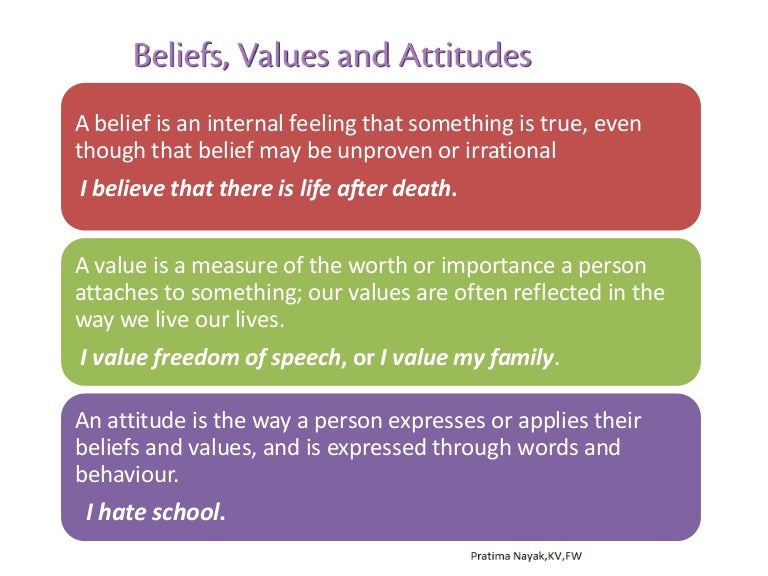
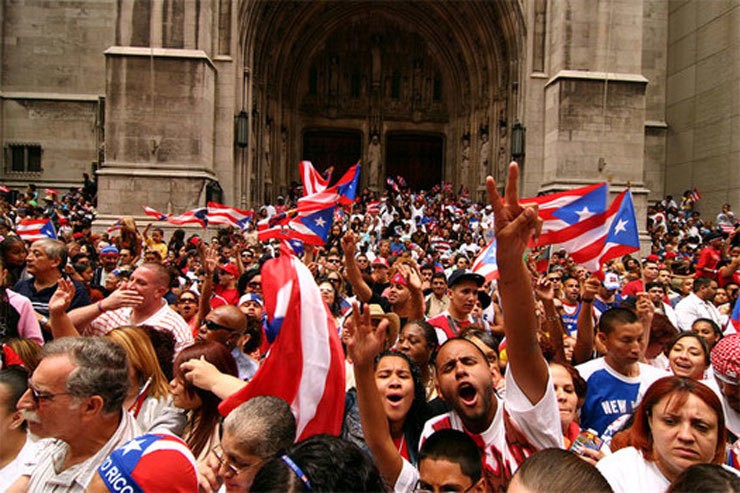
 If you arrive looking untidy or unkempt, then this will be perceived negatively.
If you arrive looking untidy or unkempt, then this will be perceived negatively.




